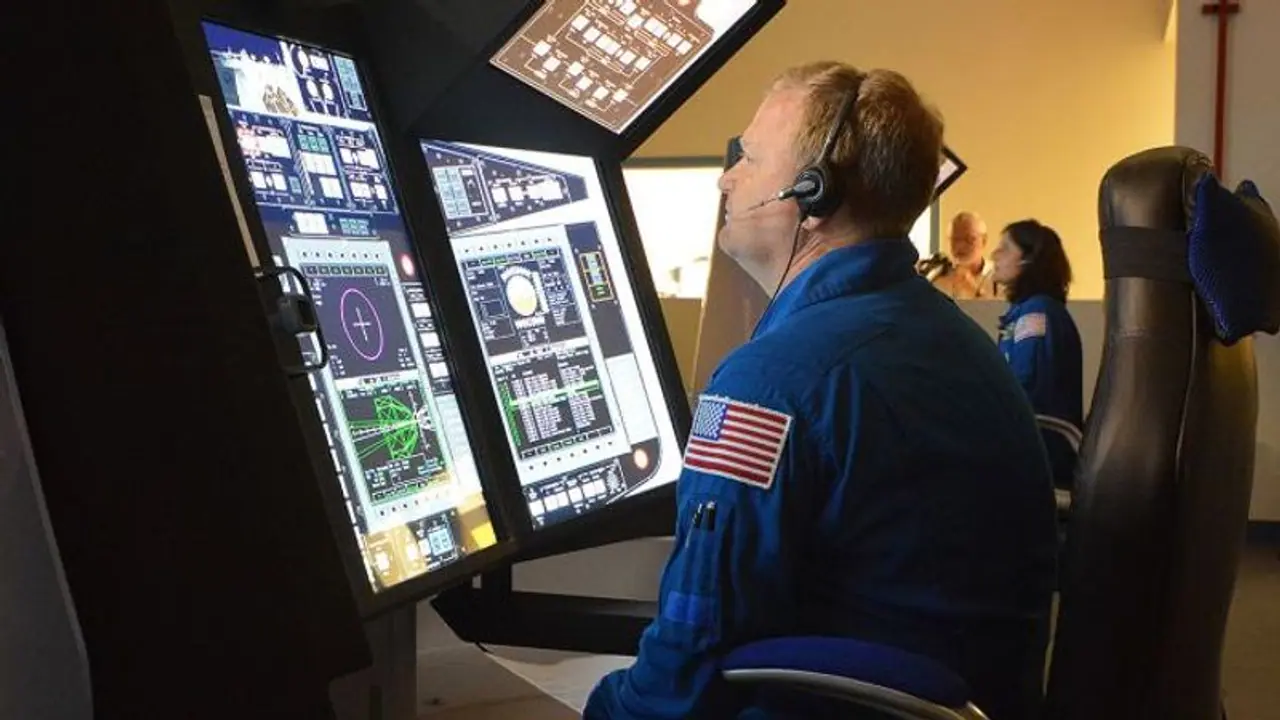Indian Space Research Organisation Chairman S Somanath has spoken of the presence of companies engaged in manufacturing aerospace components and systems, which, along with Boeing, provide promising prospects for the upcoming generation, notes Girish Linganna
Boeing is currently considering the development and production of a Space Capsule Simulator for India’s human spaceflight project, Gaganyaan. However, there is no formal contract in place at this time, according to local media reports. In the near future, there will be a series of unmanned missions followed by the significant milestone of sending an Indian astronaut into space.

The ambitious Gaganyaan programme has the objective of launching a group of four astronauts on a maiden space mission for three days in 2025. The ultimate goal of the mission is to safely return them back to Earth. This would require a Space Capsule Simulator for training purposes.
During his speech at the 11th Convocation of Pandit Deendayal Energy University in Gujarat, Chairman of the Indian Space Research Organisation (ISRO) S Somanath stated that the four astronauts had been selected for the first mission of the Gaganyaan programme. The astronauts have already undergone their training and are prepared for the mission, eagerly awaiting their opportunity to fly.
According to Somanath, this mission holds great importance in India’s journey to fulfil key objectives of its space exploration.
Somanath said that a significant amount of technological advancements needed to be made in order to enable the mission. He said the team at ISRO was tirelessly working towards achieving this goal. Over the past few years, various new technologies have been developed, refined -- and successfully implemented -- for the purpose of the mission.
According to Somanath, India has emerged as a global frontrunner in space technology. Despite relatively modest investments, the country has successfully developed the capacity and capability to construct its own spacecraft and launchers and accomplish its goals within the constraints of its budget.
Somanath highlighted the growth of India’s space industry, noting that, apart from ISRO, there are now thriving industries involved in satellite and spacecraft construction and launch. He mentioned the presence of companies engaged in manufacturing aerospace components and systems, which, along with Boeing, provide promising prospects for the upcoming generation.
Simulating Actual Conditions
The Space Capsule Simulator for Gaganyaan is a sophisticated training tool designed to replicate the conditions and functionalities of an actual spacecraft. It immerses astronauts in realistic scenarios, allowing them to practise critical procedures and responses in a controlled environment.
This simulator integrates advanced software and hardware to simulate the varied and tough challenges of space travel -- including launch, orbit and re-entry. Astronauts use the simulator to refine their skills, enhance decision-making and familiarize themselves with the spacecraft’s controls. It plays a pivotal role in preparing astronauts for the complexities and uncertainties they may encounter during the Gaganyaan mission.
A Complex and Diverse Device
The complexities of manufacturing a Space Capsule Simulator depend on the level of realism, functionality and fidelity that is desired. Some of the factors that contribute to the complexities of manufacturing a Space Capsule Simulator are:
* The size & shape of the Simulator: A Simulator can be either a full-scale replica of a real space capsule, or a scaled-down version that fits in a laboratory or classroom. The size and shape of the Simulator affect the materials, fabrication and transportation costs, as well as the space and infrastructure requirements
* Software/hardware of the Simulator: A Simulator can use different software and hardware tools to simulate the physics, dynamics, controls and systems of a space capsule. The software and hardware of the Simulator affect the accuracy, reliability and performance of the simulation, as well as the compatibility and integration issues with other tools and data sources
* Degree of interactivity and feedback: A Simulator can provide different levels of interactivity and feedback to the user -- such as visual, auditory, tactile and motion cues. The degree of interactivity and feedback of the Simulator affect user experience, learning outcomes and safety of the simulation, as well as the complexity and maintenance of the simulator components
Examples of Space Capsule Simulators
* The Apollo Capsule Prototype at the University of North Dakota, which is a full-scale replica of the original Apollo Command Module that can accommodate three people at a time and simulate launch, orbital operations and landings of different space vehicles by means of the Orbiter Space Simulator and Satellite Toolkit STK software
* The SpaceShipOne prototype at the University of North Dakota, which is a scaled-down version of the first privately built spacecraft that can accommodate one person at a time and simulate launch, sub-orbital operations and landings, as well as drop-offs from high-altitude by means of the X-Plane Flight Simulator software
* The TESSERAE project at the MIT Media Lab, which is a concept for a self-assembling space architecture that can reconfigure into different shapes and functions -- such as a space capsule, a space station, or a space habitat -- by using modular robotic units that communicate and cooperate with each other
The author of this article is a Defence, Aerospace & Political Analyst based in Bengaluru. He is also Director of ADD Engineering Components, India, Pvt. Ltd, a subsidiary of ADD Engineering GmbH, Germany. You can reach out to him at: girishlinganna@gmail.com
